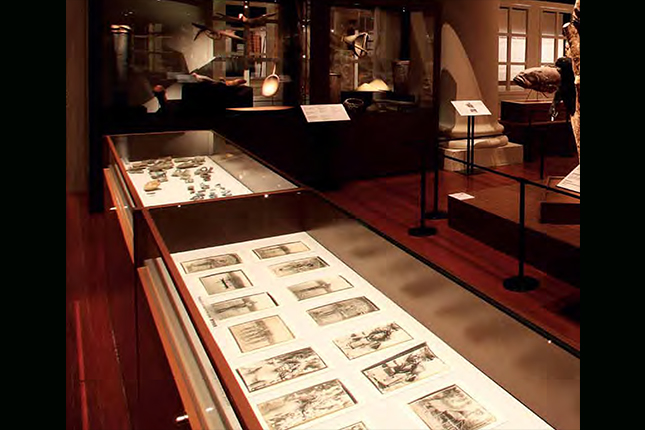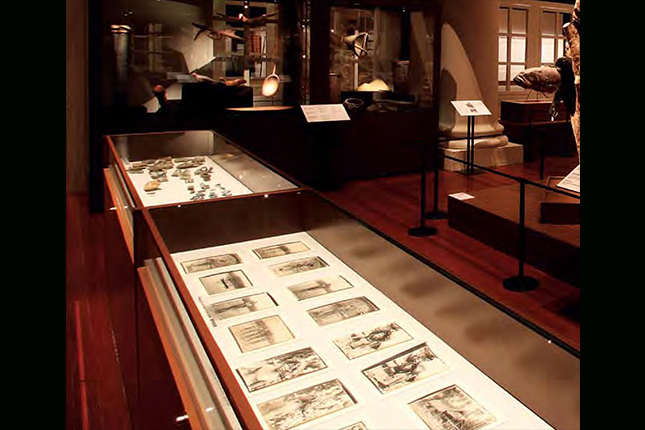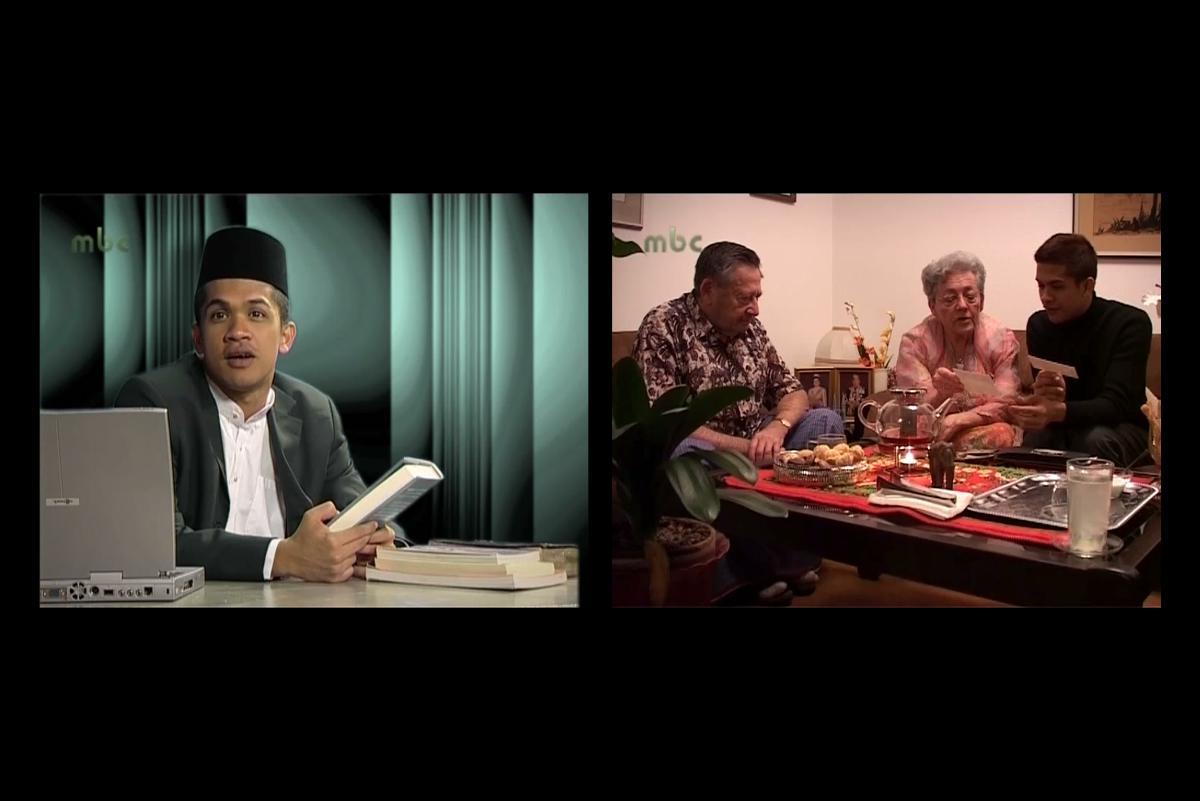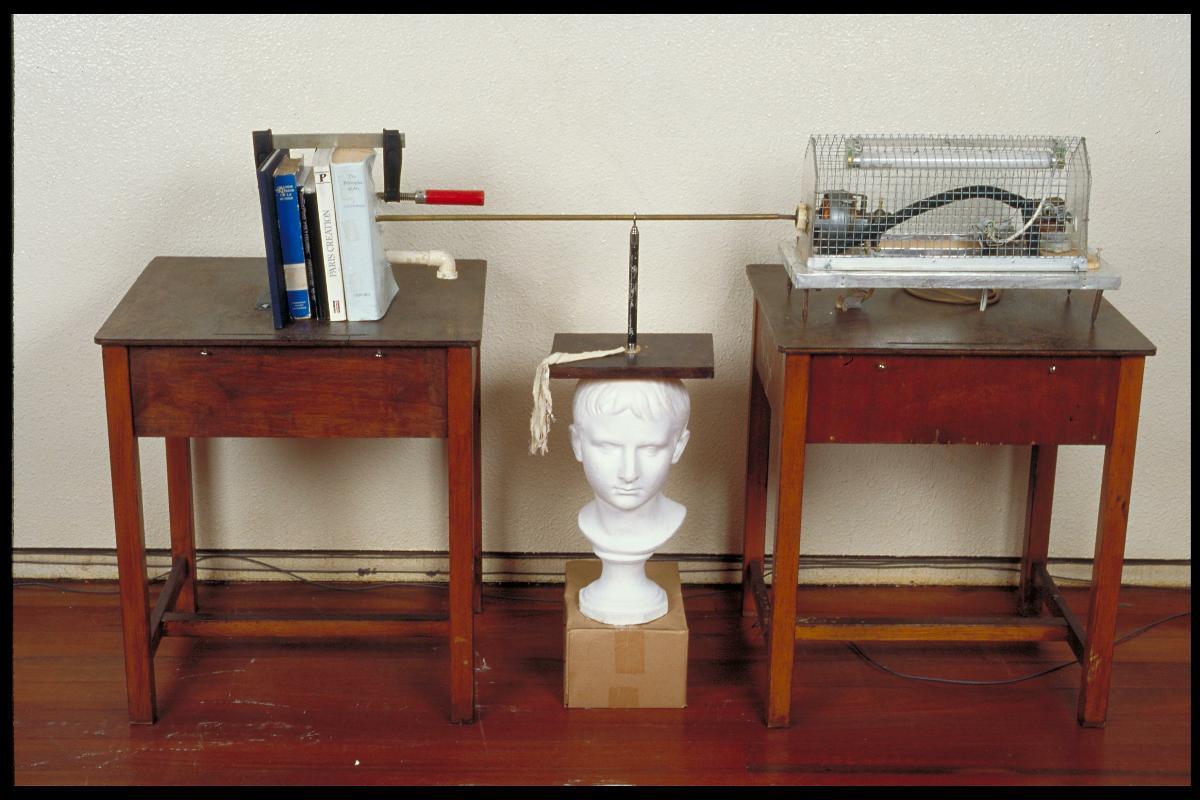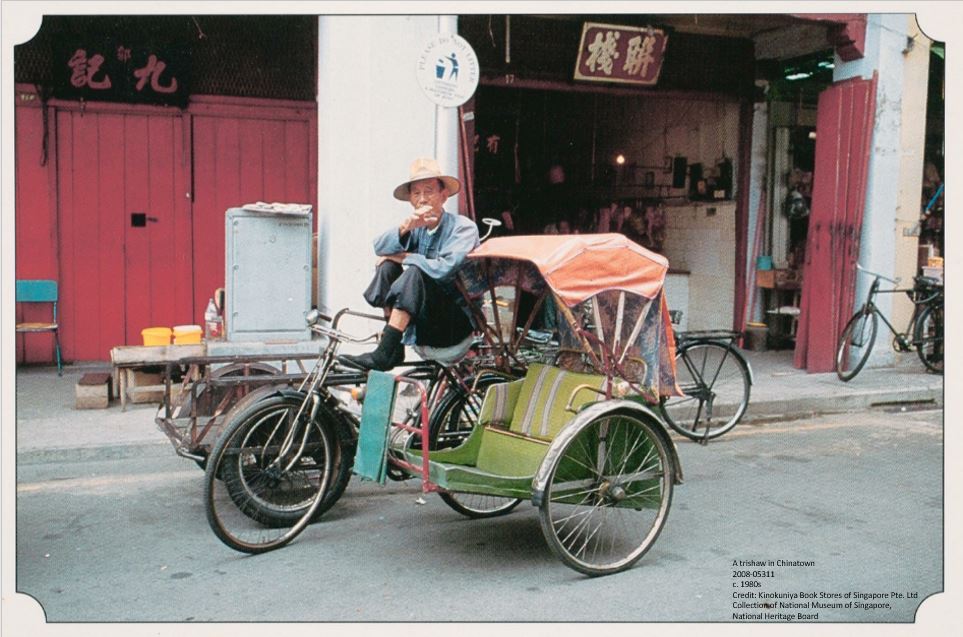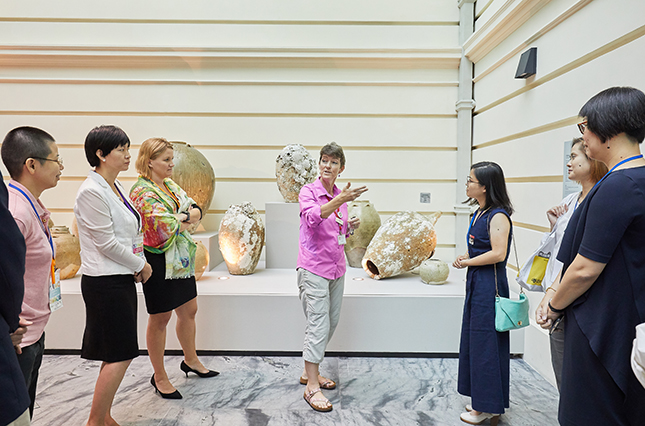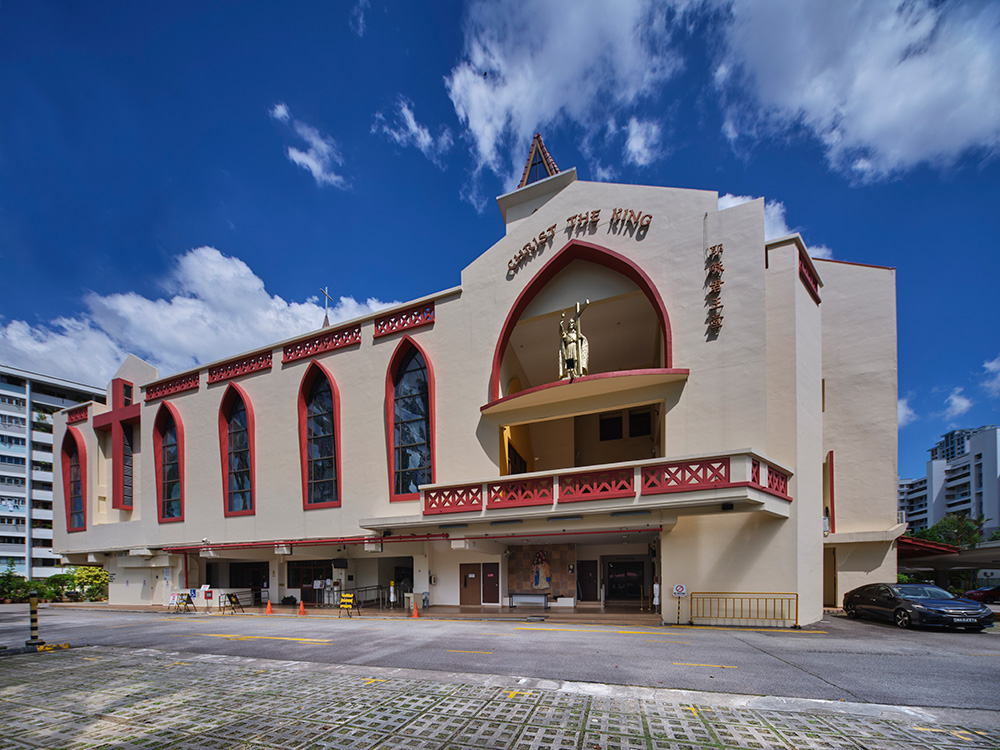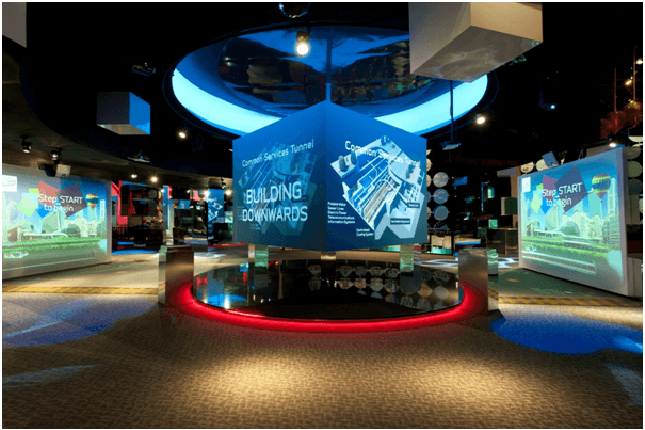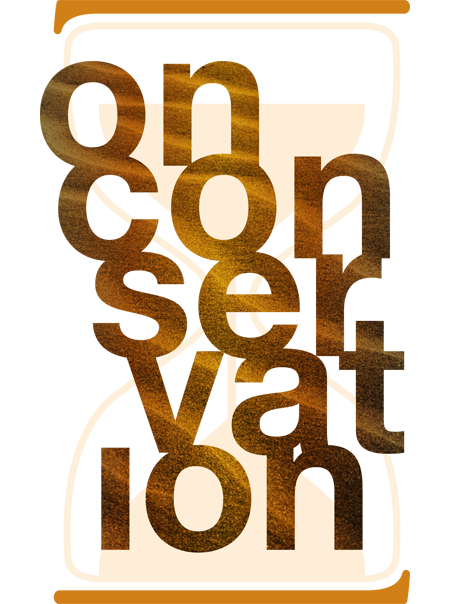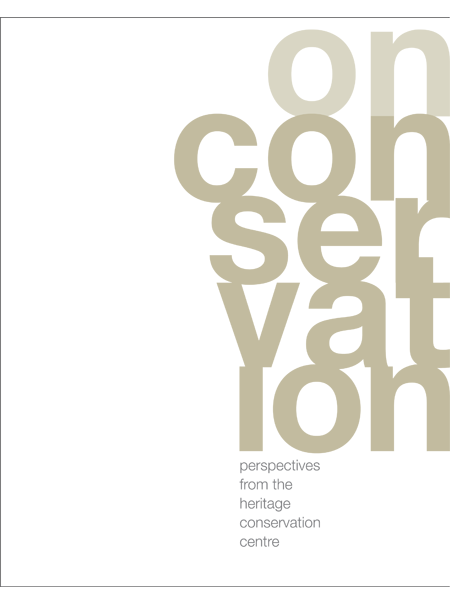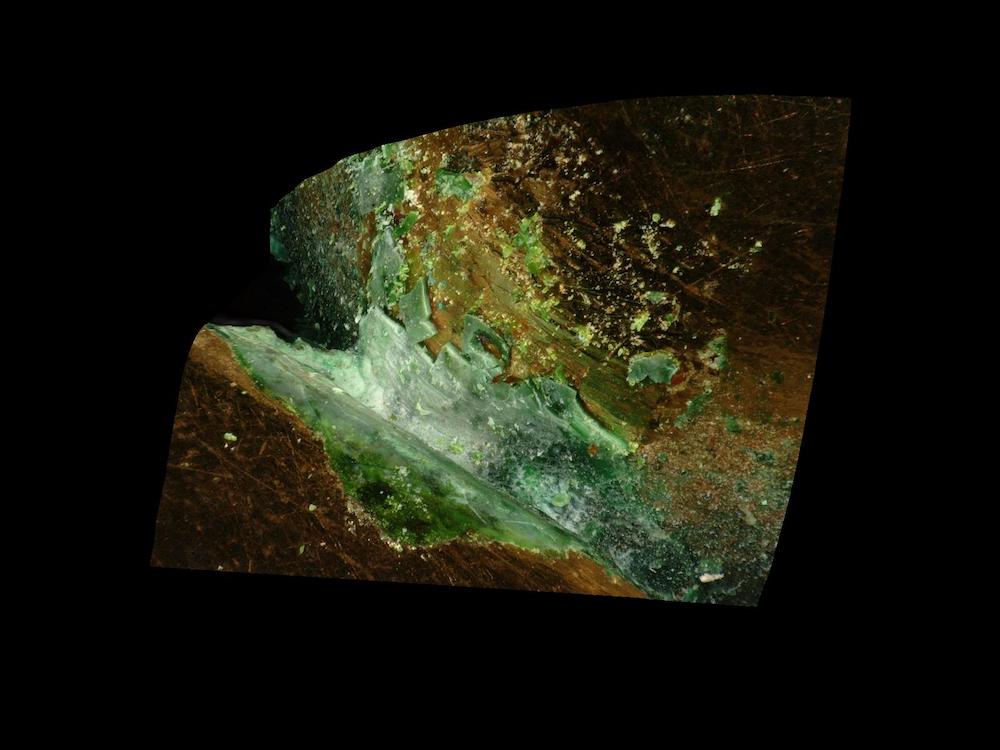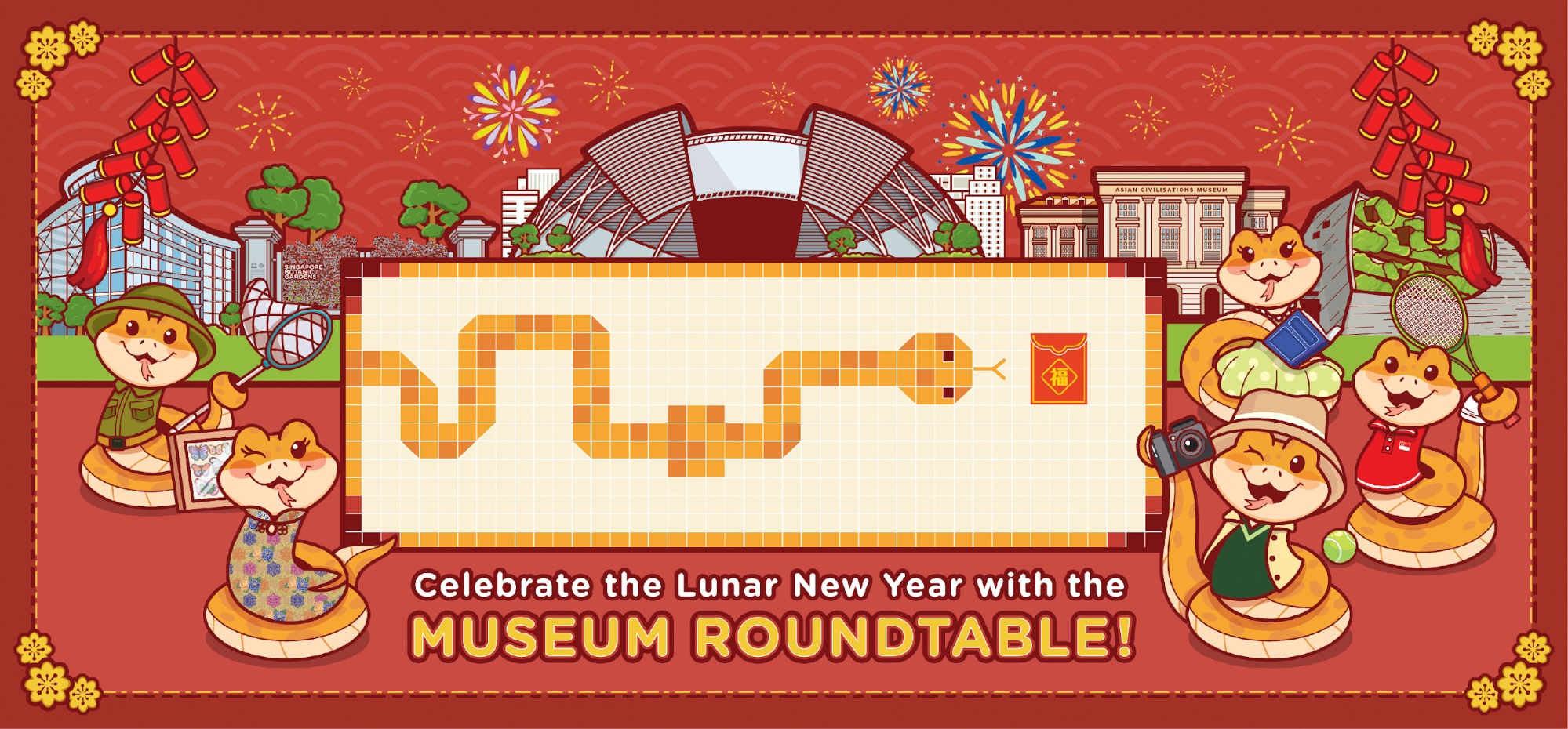TL;DR
Through archival notes and published materials, this article will share stories behind how some specimens were found, the key personalities involved in the collection and why they have collected these specimens. On a larger context, the article also looks into the history of collecting as a natural form of human activity and it will end by examining the importance of a natural history collection today.
By Clement Onn, Assistant Curator (South Asia)
Asian Civilisations Museum
Images: Asian Civilisations Museum
BeMuse Volume 3 Issue 3 - Jul to Sep 2010
When I was asked to write this article, I was told to focus on the natural history collection1 of the former Raffles Museum and how they showcase a different aspect of Singapore’s (and the region’s) heritage. At this point, I must confess that I am no specialist in the field of natural history or biodiversity. However, as a student of museology, I have taken the liberty of expanding my topic to include the roles of collectors – both institutional and individual – and how they have contributed in building the Raffles Library & Museum’s natural history collection.
Through archival notes and published materials, this article will share stories behind how some specimens were found, the key personalities involved in the collection and why they have collected these specimens. On a larger context, the article also looks into the history of collecting as a natural form of human activity and it will end by examining the importance of a natural history collection today.
From Cabinet of Curious to Natural History of Collection
During the Renaissance period that emerged in the early 16th century, there began to appear – initially in European courts – collections of a special type, known as kunstkammer or cabinet of curiosities. The term literally refers to a ‘cabinet’ or a room filled with various types of ‘curios’ (objects) whose categorical boundaries were yet to be defined. These collections included antiquities, works of art, scientific instruments, books, paintings, religious or historical relics, exotic items from faraway lands and particularly natural history specimens. The historian, Irmgard Musch has commented that the aim was to bring together – at least in representative form – the most complete collection possible of all things knowable and worth knowing, to record them and thus to make them easier to grasp2.
Famous owners of cabinets of curiosities included Duke Albrecht V of Bavaria, Munich (1528-1579); Flemish physician Samuel van Quiccheberg (1529-1567); Archduke Ferdinand II of Austria (1529- 1595); Grand Duke of Tuscany, Francesco I de’ Medici (1541-1587); Holy Roman Emperor Rudolf II (1552-1612); Danish physician Ole Worm (1588-1655); and Dutch pharmacist Albertus Seba (1665- 1736). Most of their collections laid the foundation of European museums today. In assembling their collections, these men were actually following a trend of their time.
The Renaissance was also known as the age of discovery as several nations and peoples engaged in intensive explorations of the world. In each voyage, new geographical and scientific findings were made and the ideal cabinet of curiosities defined an attempt to produce an overall and encyclopaedic picture of this world, the cosmos. However, this cosmological view of the world began to lose importance after 1600. In the 17th and 18th centuries, cabinets of curiosities were replaced by more specialised collections often triggered by scholarly curiosity based on scientific ‘objective’ principles. The new aim was less to reflect, in representative samples, the whole cosmos than to cover comprehensively a chosen area of speciality. Through description, comparison and ordering of their pieces, collectors strove to reach an empirical and scientific understanding of nature. It was even considered as a duty of every educated person to watch and study the time in which he lives and to participate in collecting natural history specimens or objects from foreign material cultures.
From the 18th century onwards, Europeans were increasingly interested in nature and societies beyond the Western world. This led to the establishment of academic societies, such as the Batavian Society of Arts and Sciences (1778) and the Asiatic Society of Bengal (1784), whose activities included the study of natural history, people and their material cultures. These institutions often encouraged laymen to collect for the sake of science and to share their research and donate their collections.
By the mid 19th century, riding on the expansion of colonial empires, European and American collectors were making their way to Southeast Asia in search of exotic plants, animal specimens and ethnographic objects. Scientists, voyagers, entrepreneurs and amateur collectors played an important role in building the large natural history and ethnographic collections of museums around the world. There were motivations enough for collecting – whether to act as an intellectual stimulus, to satisfy an investigating spirit, or to display wealth and erudition. And of course, collections owned or donated to academic institutions also raised the social prestige of their owners. Natural history museums, which evolved from cabinets of curiosities, also played an important role in the emergence of biological and environmental studies.
The birth of the Raffles Library & Museum
To bring this long museological tradition into the local context, Singapore’s oldest museum owes its birth to an eminent British colonial administrator, Sir Thomas Stamford Raffles (1781-1826), who was also a passionate naturalist and collector of natural history specimens. Raffles’ interests in natural history are well known, culminating in his founding of the Zoological Society of London in 1826, from which arose the London Zoo. Before he set foot in Singapore, he pursued these interests during his career in Penang, Malacca, Java and Sumatra. His own scientific interests were largely zoological and later he collected all things Javanese.
Raffles’ History of Java (1817) is an amazing assortment of miscellaneous knowledge. Writing to his friend, Dr Thomas Horsfield, (1773 - 1859) an American physician and naturalist, he constantly mentioned his latest finds and informed Horsfield of the shipping of his collections back to London. He wrote:
"Among my baggage and collections sent home by the Borneo are a few cases of animals (not very important but some new) and two cases of insects belonging to Lady R. If you would occasionally look at the latter it may be useful & my friend Mr. Evans to whose care they are consigned will gladly transfer them to you if you will under-take the charge – there is also a case or two of snakes and 5 barrels of animals in spirit – none however important – one contains the Bornean Orang Ootan4..."
Raffles’ letters reveal that he was a man of omnivorous learning but had little time, with an 18th century faith that believed it is possible to learn everything4. It was he who, in 1823, proposed setting up a museum and library in Singapore as a repository for specimens deemed relevant to the flora, fauna and peoples of the region. In another letter to Dr. Horsfield, he mentioned that:
"I am at present engaged in founding an institution at Singapore for the cultivation of the Chinese, Siamese and Malayan languages & the moral & intellectual improvement of the natives, in which there will be separate department for scientific purposes including a professor of natural history – as patron and founder of this institution I shall have to form a committee or corporation in Europe & we shall then have the means of at all times collecting information regarding these countries – the particulars I will hereafter send you when they are printed – I am glad to see your botanical collections are so well arranged and that you so soon propose publishing5."
Unfortunately, Raffles left Singapore the same year and it was not until 1849 that the institution – named in his honour – was established by the committee of the Singapore Institution (present-day Raffles Institution). After several relocations, the Raffles Library & Museum finally found a home at Stamford Road and was officially opened on 12 October 1887.
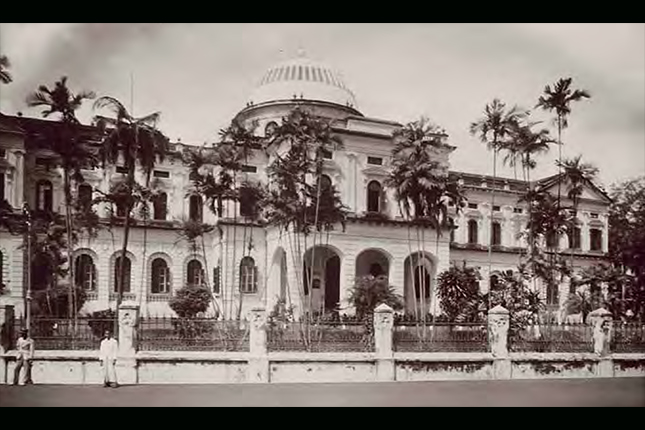
Collectors and Curators: Charting the Specimens of the Raffles Museum
The Raffles Library & Museum was established in a period when the rise of disciplines such as anthropology and archaeology coincided with the expansion of colonial empires. Natural history was still the dominant discipline and took centre stage in the Raffles Library & Museum (RLM). Until its renaming as the National Museum in 1969, the RLM had established itself as a well-known scientific institution with a particularly comprehensive zoological collection. Almost all its curators were specialists in natural history6. In contrast, most of the ethnological materials acquired in the early years of the museum were haphazardly acquired with sketchy records and little information on the objects.
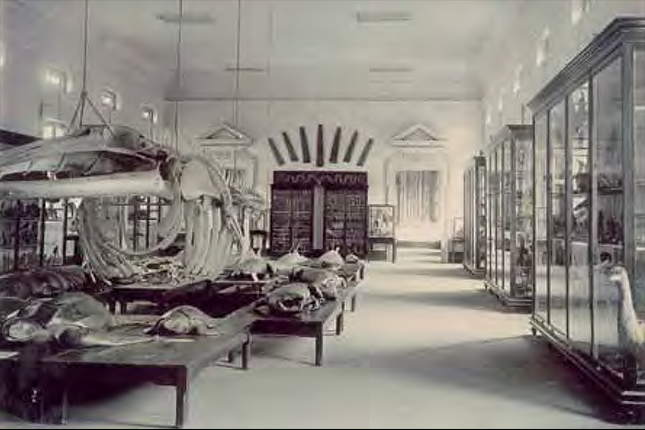
In 1893, RLM curator Dr Karl Hanitsch (1860-1940) reported the need for more systematic collecting with clear objectives and accurate documentation, as these were evidently lacking at the time. However, due to various other complications such as limited funds, manpower and storage space, the museum continued to rely on ad hoc donations and purchases whenever the opportunity arose.
One of the earliest attempts to systematically collect objects was in September 1924. Then RLM director, Cecil Boden Kloss (1877-1949), along with his assistant, N. Smedleyand Dr. H.H. Karny, Assistant Entomologist of the Zoological Museum in Buitenzorg (present day Bogor) in Java, organised an expedition to the Mentawai islands off the west coast of Sumatra. The expedition included 12 ‘native’ assistants who did most of the work – catching insects, trapping animals and gathering samples of plants and seeds. Among them was a Malay plant collector from the Botanical Gardens in Singapore and a number of Karny’s assistants from Java. Together, they spent two months on the islands gathering over 1,500 specimens. Most of these were natural history specimens now housed now in the collections of the Raffles Museum of Biodiversity Research at the National University of Singapore. Among the items collected were about 150 ethnological objects which eventually came to the Asian Civilisations Museum. This small but significant collection of objects remains largely intact today. The majority of the pieces collected are everyday items of local manufacture: hats, containers, tools and weapons.
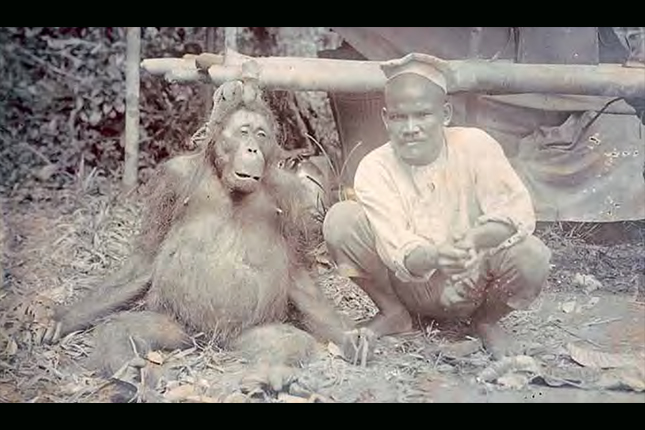
Building a Regional Network
The Raffles Museum curators continued to build up the collection by organising expeditions around Southeast Asia – often jointly with staff from the Selangor Museum and Perak Museum.
Thus a large number of specimens were acquired and deposited at the Raffles Museum. The Raffles Museum also conducted specimen exchange programmes with other institutions in Malaya, Indonesia, England, America, the Netherlands and India. One of the most significant exchanges was arranged in 1926 by H. C. Robinson, then director of the Federated Malay States Museums. He sent the bird and mammal collections of the Selangor Museum in return for the Raffles Museum’s insect collection.
Aside from the staff’s tireless collecting activities, many individual collectors have also contributed to the museum’s collection. William Louis Abbott (1860-1936), a native of Philadelphia, was considered as one of America’s greatest naturalists. In 1899, Abbott commissioned the construction of a 65-foot schooner, The Terrapin, in Singapore. Over the next 10 years, he visited almost all of the Southeast Asia island groups on The Terrapin. After each expedition, Abbott would return to Singapore to have his collections shipped off to Washington, D.C. He donated over 6,000 objects to the Smithsonian Institution, most of which were zoological specimens. A small portion of his collection was donated to the Raffles Library & Museum. Many were collected in collaboration with Kloss. Today, most of Abbott’s zoological collection remains intact in the Smithsonian and the Raffles Museum of Biodiversity Research (RMBR), Singapore. A group of proboscis monkeys from West Kalimantan, Indonesia and a Malaysian Giant Terrapin donated by Abbott in 1905 and 1907 respectively are still on display in the RMBR gallery. These specimens were borrowed in 2009 for display at Hunters & Collectors – the Origins of the Southeast Asian collection, a special exhibition at the Asian Civilisations Museum.
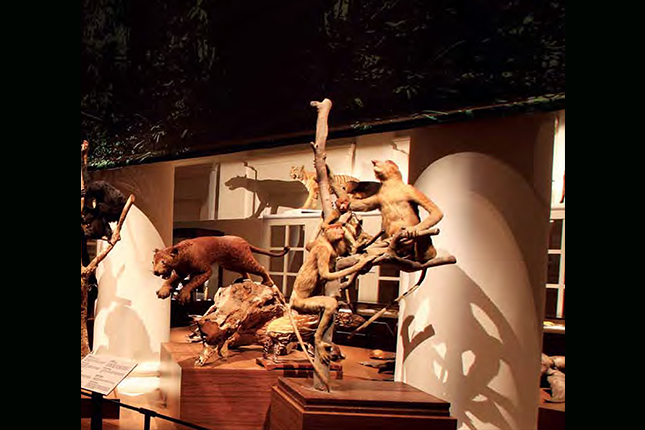
Another prominent individual who contributed to the Raffles Museum’s zoological collection was Tom Harrisson (1911-1976), a British polymath and then Director of Sarawak Museum from 1947-1966. His friendship with the then director of the Raffles Museum, Michael Tweedie, fostered many working opportunities between the two museums. It was recorded in the Raffles Museum’s Annual Report that he brought a large collection of over 900 bird skins from the Kelabit Plateau in the interior of Sarawak8. Both Harrisson and Tweedie made a preliminary examination of the collection and drafted a report on this. It is unknown, however, if this report was ever published.
Anonymous Assistants
There is another class of unsung heroes who helped to build the museum’s collection. They were usually local assistants hired by collectors during their expeditions. Using local assistants was extremely important for both institutional and individual collectors. They acted as guides to the unfamiliar terrains and as interpreters to language and cultural barriers. This fact is often undermined or even neglected in return for a more objective scientific report or a more romantic and adventurous account by collectors in those days. Tweedie made a gratuitous note with regards to hiring local assistants and their contribution in the museum work.
"When I arrived in Singapore in 1932 to fill the post of Assistant Curator, zoological collecting and taxonomy was the museum’s main activity, but its scope was limited. The retiring Director Cecil Boden Kloss and his successor F.N. Chasen interested themselves solely in mammals and birds. The Curator, N. Smedley, who retired at the same time as Boden Kloss, had concerned himself mainly with the museum’s collection of reptiles. Entomology was covered by H.M. Pendlebury at the museum at Kuala Lumpur. So I had care of the reptiles, the fish and all of the invertebrates.
The collectors on the staff were Ibans from Sarawak, intelligent, energetic men and born naturalists. They and I would go together sometimes on day excursions, sometimes camping for a week or more, and they were soon far more adept at finding centipedes, scorpions and the like than I was. Under their patient and sympathetic tuition my Malay vocabulary steadily progressed9."
The encounters between the local assistants and collectors also included many interesting stories. In an expedition to the Batu Puteh and Ulu Batang Padang Mountains in Perak, Cecil Wray, a Pahang Resident of the State Council, reported of a strange creature that lurked the area. He wrote:
"Later on we again heard the Datoh exhorting the Sakeis to be vigilant during the night; we could not understand why, but on inquiry, were told that on this mountain lives a peculiar animal, which prowls about at night: the body is that of a rhinoceros, but it has the head of a tiger. We were particularly told if one should visit the camp not to look at it, for it always chased and tried to kill anyone who looked at it, whereas if no notice was taken it passed on quietly. The Penghulu assured us that lots of people had seen this curious beast and many had been chased.10"
A blend of Science and Artistic Skills
Collecting natural history specimens might appear to be fun and exciting on the surface but it has practical problems as well. Storage space and conservation matters are usually the main concerns when it comes to natural history collections even today. While fossils, seashells and bones were not subject to major decay, other natural specimens require complex conservation measures.
Curators and specialists had to have basic knowledge of other relevant disciplines such as medicine and taxidermy. Aside from publishing scientific reports, curators also published guidebooks to assist amateurs and special interests groups. Cecil Boden Kloss, himself a well-known taxidermist, wrote an instruction manual for preparing mammal skins11.
Publications formed a part of every natural history collection and also served as commentaries on them. Kloss understood the importance of publications and had hence started the Bulletins of the Raffles Museum, which provided access to specialised subject matter and enabled readers to debate and acknowledge the work produced by the museum curators. The Bulletins quickly became one of the premier scholarly journals in its time, publishing many important papers on Southeast Asian zoology. The illustrations in the Bulletins also served to supplement collection of natural specimens, closing any gaps and making up for any deficiencies with pictures. Illustrations of the specimens could act as a substitute or supplement for specimens that were difficult to preserve or only partially collected.
However, to produce an illustration of a specimen is not an easy task. Musch has commented that “when a collector or naturalist commissioned an artist to draw specimens of interests to him, and in a second stage even to transfer them onto a plate for the press, the plant or animal in question underwent considerable abstraction and distillation on its way to becoming a scientific illustration12.” Carl Alexander Gibson-Hill, Director of the Raffles Museum (1911-1963) was known to act as both naturalist and artist.
It is also interesting to note that he liked to make his own drawings in pen and ink, choosing not to rely on the Museum’s resident artist. He preferred to depict his subjects in black and white instead of colour for he noted that:
"[Colour illustrations] are pleasant to draw, but the blocks are expensive (for publishing), and they are frequently not as helpful as many beginners (bird watchers) imagine them to be. Black and white work places the emphasis on the arrangement of light and dark tones in the plumage. This is far more constant under varying climatic conditions than the colour itself13."
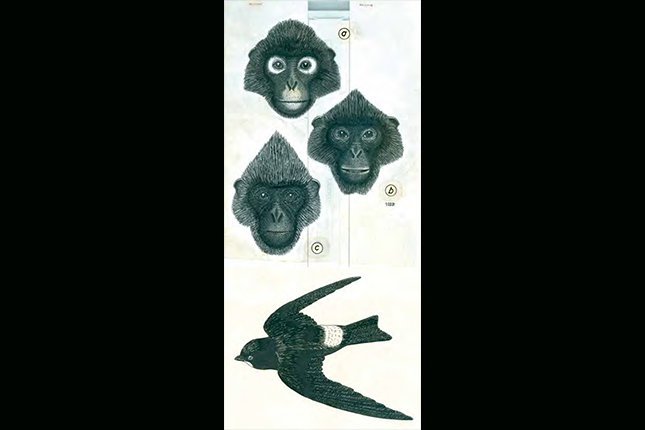
We can see from Gibson-Hill’s illustrations that a specimen was regarded as a representative of its species and its appearance was systematised. In most natural history illustrations, individual traits not typical of the subject’s kind were minimised and the scientifically significant ones were accentuated. The elements important for human identification of the specimens are better rendered and considerably clearer in the picture than in the actual specimen itself. Musch commented that this pictorial abstraction technique applied by artists of natural history illustrations may also be understood as one way of taming the multifariousness of nature14.
The natural history collection enjoyed its prominence until 1969 where its fate took a sudden turn for the worse. The Raffles Museum was renamed the National Museum and new directions were set for the institution to cater for arts, history and anthropology. The natural history collection was moved out to the Singapore Science Centre and was later transferred to the University of Singapore’s Bukit Timah campus and the collection became known as the Zoological Reference Collection in 1972. However due to space constraints and bad storage conditions, some specimens were damaged and it took a tremendous effort by the curators to prevent more losses. In 1986, the collection finally got a permanent home in the Kent Ridge campus of the National University of Singapore. Two years later, the university decided that the time was ripe to establish a research centre for biodiversity and hence oversaw the birth of the Raffles Museum of Biodiversity Research.
A Race Against Time: Preserving and Presenting Natural History Collections for the Future
Today, the Raffles Museum of Biodiversity Research (RMBR), renamed the Lee Kong Chian Natural History Museum (LCKNHM) on 1st April 2014, has well-representd collections of animals - some of which are among the best in the world. At the time of writing, the LCKNHM had around 566,500 specimens16. Most of these items are irreplaceable, priceless and historically significant specimens.
Among the museum’s mammal collection, the primates (a taxonomical group that includes monkeys and apes) which total 867 catalogued specimens are probably the best represented. The LCKNHM also has large collections of rats, squirrels and bats. The mammal collection had 315 species and around 15,000 specimens in 2010.
The LCKNHM is also one of the finest reference museums for Southeast Asian birds, with approximately 1,060 species and some 31,000 specimens in 2010, including a fine collection of eggs and nests. Even with legal constraints on bird collecting, a few good specimens are still donated from time to time by members of the public nowadays. These are usually casualties of the migratory season.
In 2010, there were about 70,000 specimens in the RMBR’s entomological collection. While many specimens are mounted on pins, others are preserved in vials of alcohol. Microscopic taxa like mites are mainly mounted on glass slides. All entomological specimens have been sorted according to their various taxonomic levels.
At an international level, despite of their ever-growing importance, natural history collections, like most other aspects of the museum world, are suffering from a serious decline in resources16. Along with the wider impacts of globalisation and economic inflation, most museums today are under serious budget constraints, inadequate funding, declining numbers of trained professionals and lack of young people who want to work in museums. It was reported that the Smithsonian Institution’s National Museum of Natural History in Washington, D.C., lost 30 federal scientist positions in the last decade17.
The challenge of future museums lies on how these institutions manage to find ways of continuing to develop the research potential of their collections while learning how to live with reduced resources. In Owen’s report, Robert Gropp, a representative of the American Institute of Biological Sciences (AIBS) commented that natural history collections are bleeding slowly. Many museums are losing staff positions due to cuts to their operating budget. Gropp predicts that slowly but surely they will lose resources until an administrator determine that it is best to close the facility18. These implications have resulted scientists and curators working in a museum in a race against time.
To make matters worse for natural history museums, the world is in the grip of a biodiversity crisis. Keith Thomson, an Emeritus Professor of Natural History at Oxford University, has warned that “as the whole ecosystems continue to be lost because of human activities, the need for natural history collections is more important than ever. These collections provide essential research in the biological sciences; serves as a vast library about what organisms have lived and are living on Earth; and contribute to public education in an easily accessible venue19.”
Research in biodiversity is of particular urgency. Professor Peter Ng, Director of the Raffles Museum of Biodiversity Research, has remarked that “Southeast Asia is one of the world’s biodiversity hotspots, though it has received much less attention compared to the Amazon, West Africa and the Great Barrier Reef. But how can we protect the diversity of this region if we do not conduct the necessary research to understand it in the first place20?”
With natural history museums in Washington, New York and London drawing millions of visitors each year, there was demand from both the public and scientists of this region for a proper natural history museum in Singapore. Commentators and letter writers to the newspapers noted that the premises of the RMBR in 2010 did not allow it to realise its full potential in education and research21. The museum received tremendous public support since media reports highlighted its vast but little-known collection. This call for a new facility was heard from an undisclosed member of the public who pledged S$10 million for a natural history museum22. The plan to build a new natural history museum in Singapore was fulfilled with the building of the LCKNHM, a museum and research facility, which was opened to the public on April 18, 2015. It aims to be the focal point for regional biodiversity research and education and it is accessible to other universities, national agencies and nature lovers.
The modern museum is a constantly evolving entity. Julian Spalding, a former director of the Glasgow Museums, has observed that museums “will continue to have a duty to accumulate knowledge, but their authority will be based more in the future on their openness towards and commitment to learning, not on the weight of their knowledge to date23.” Given today’s technological advancement, anyone with access to the Internet can obtain or claim any required form of information. Hence, museums would have a better chance of captivating the attention of a wider audience if they used as their starting point the ignorance we have all shared, and must share. In other words, museums need to preserve the past not merely for nostalgic reasons.
Nostalgia is personal; it dies with each individual and generation. The past only merits preservation if it has something to teach the public of today. Museums are about learning through looking. Hence, it is the museum’s job to make its collections meaningful to audiences. Modern museums have to find more dynamic ways of integrating the public with the research functions of collections. Natural history collections do not just mirror the planet’s biodiversity – they help to sustain it. For many museum visitors, the countless rows of stuffed or pickled specimens on display in the galleries are a reminder of what’s at stake.
Selected timeline of the Raffles Library and Museum
1823 – Sir Thomas Stamford Raffles and Dr Robert Morrison (1782-1834) come up with the idea of a scientific institution devoted to the study of natural history and history of the islands of the Malay Archipelago. Raffles departs for Bencoolen (present day Bengkulu, Sumatra) on 9 June. Work plans for the scientific institution are handed over to a board of trustees to oversee the project.
1827 – The institution building, known as the Singapore Institution, is erected but stands vacant for eight years.
1837 – The school library begins to build its collection of books. The management committee contemplates the formation of a museum in connection with the library.
1849 – The museum slowly begins to take shape. The Library receives an official gift of two gold coins from the Temenggong of Johore, presented by Governor Colonel W.J. Butterworth, who supports the management committee in pressing for the establishment of a museum.
1850 – The management committee reports that the museum is a valuable addition to the library and gradually sees a series of official gifts from neighbouring government officials. The Straits Settlements government announces the museum’s participation in the Great Exhibition in London the following year.
1851 – The Great Exhibition of the Works of Industry of All Nations is held in London. It is the first in a series of World’s Fair exhibitions of culture and industry.
1873 – Singapore participates in the Permanent Exhibition of Colonial Products in South Kensington, UK. Formal paperwork is put through for the establishment of the Raffles Library and Museum.
1874 – The Raffles Library and Museum (RLM) opens its doors to the public. The first Annual Report of the RLM is published. Issues reported frequently over the next century are: lack of space, lack of proper accommodation and too much work for the curator-cum-librarian.
1881 – Growing interest from the public and scientific society at large towards the library and museum. Scientists passing through Singapore begin to visit the museum and zoological specimens are sent for identification by experts.
1882 – After several relocations, the RLM is shifted to the foot of Fort Canning at Stamford Road.
1887 – The museum is officially opened on 12 October 1887 by Frederick Weld, Governor of the Straits Settlements.
1895 – Entomologist Dr Karl Richard Hanitsch (directorship 1908–19) appointed Curator and Librarian of the RLM. His principal research is in entomology (the study of insects), but he also works on other natural history specimens such as sponges, birds, amphibians and mammals. A large part of his publication is on insects, in particularly, cockroaches. Hanitsch becomes director in 1908 and holds the position for eleven years. During his tenure, RLM’s zoological collection prospers from expeditions around the region. The ethnological collection is also enhanced by donations and acquisitions from Agricultural Trade Shows around the region. Before his retirement, Hanitsch starts a collection of portraits, plans and pictures of old Singapore to celebrate the centenary of the founding of Singapore by Raffles.
1902 – Valentine Knight joins as assistant curator and taxidermist for the zoological collection, a post he holds till 1921. He is responsible for many taxidermy masterpieces during his service.
1911 – Growing interest in the museum from the local communities. In 1908, the museum sees over 10,500 visitors over the two-day Chinese New Year holiday and by 1918, some 17,472 visitors pass through the galleries.
1919 – Entomologist John Coney Moultan (directorship 1919- 23) succeeds Dr Hanitsch as director. He was Curator of the Sarawak Museum (1909-15) and founding editor of the Sarawak Museum Journal. Moultan reorganises the natural history collection, giving the insect collection a proper display and reviews the chaotic and haphazardly arranged ethnological and archaeological collections. Moultan emphasises the museum’s educational role and plans a series of guides to the different sections of the zoological collections. He resigns in 1923 to become Chief Secretary to the Government of Sarawak.
1921 – Frederick Nutter Chasen appointed assistant curator to take over from the retiring Valentine Knight. Chasen has a strong interest in birds and museum work.
1923 – Zoologist Cecil Boden Kloss (directorship 1923–32) takes over directorship from Moultan. In the early 1900s, Kloss travelled with American naturalist William Louis Abbott to the Andaman and Nicobar islands. He also worked under Herbert C. Robinson, Director of the Federated Malay States Museums. Kloss and Chasen make a strong team: they established the museum’s zoological collection and boost the quality of research. Kloss retires in 1932, remembered as an ardent collector, skilful taxidermist, fine shot and a first class photographer.
1924 – Kloss and staff of RLM conduct the first systematic collecting expedition on material culture specimens from the Mentawai islands.
1928 – Kloss produces the Bulletin of the Raffles Museum. The first paper in the inaugural issue is written by Dr Hanitsch.
1930 – The museum’s popularity continues. More local residents seek information from a commercial or scientific point of view on the museum. 300,000 visitors come annually.
1932 – Frederick Nutter Chasen (directorship 1932–42) is the natural choice as Kloss’ successor. Chasen, the most reliable authority on Malaysian birds and mammals, authors more than 60 articles. He is also consulted regularly by every international expedition to the area. Sadly, he dies at sea attempting to flee Singapore on the eve of the Japanese invasion. Michael Wilmer Forbes Tweedie joins as assistant curator (1932–41) He was interned during the Japanese Occupation.
1935 – RLM receives three grants from the Carnegie Foundation, which are used to refurbish the museum galleries and cabinets, produce new research publications, fund more fieldwork and archaeological expeditions and employ additional staff. H.D. Collings joins to assist with the non-zoological collection. He has practical training in archaeology and experience in excavating prehistoric sites in Europe.
1942 – During the Japanese Occupation, RLM is headed by Professor Hidezo Tanakadate, a volcanologist, and a handful of British scientists, who work with the Japanese to protect the research integrity and collection of the library and museum. Carl Alexander Gibson-Hill joins on the eve of the Japanese attack and is present when Professor Tanakadate enters the museum. He is interned together with other museum staff.
1945 – World War II ends. The museum is handed over to Gilbert Archer, Officer-in-charge of Monuments, Fine Arts and Archives of the British Military Administration. RLM was one of the few places not looted prior to the Japanese occupation.
1946 – Michael W.F. Tweedie (directorship 1946–57) takes over directorship from Gilbert Archer. His first challenge is to rebuild the building and reorganise some of the much neglected museum collections. The zoological and anthropological galleries are rearranged to focus on materials from the Malay Peninsula. Tweedie also recognises the need for greater specialisation of curators and the increased importance of the ethnographic collections. He creates the positions of ‘Curator of Anthropology’ and ‘Curator of Zoology’. Tweedie also conducts many expeditions around Southeast Asia. H.D. Collings is appointed Curator of Anthropology and C.A. Gibson-Hill Curator of Zoology.
1957 – Carl Alexander Gibson-Hill (directorship 1957–63) is appointed director. The last expatriate director of the Raffles Museum, Gibson-Hill is a medical doctor by training and a self-taught ornithologist and photographer. A keen naturalist and dedicated scientist, Gibson-Hill’s scholarship soon embraces Malaysian history and archaeology as well. He is found dead in his home in Singapore just before he is to relinquish the post of director in 1963. Graduates of the University of Malaya – Eric Alfred and Christopher Hooi – join as Curator of Zoology and Curator of Anthropology respectively.
1960 – The museum and library split with the latter forming the National Library adjacent to the museum building. In 2005 the National Library is relocated to Victoria Street. The museum is renamed the Raffles Museum.
1965 –The Republic of Singapore is born.
1969 – Raffles Museum is formally renamed the National Museum in the interest of emphasising a sense of national identity.
1972 – The zoological collection is transferred out of the National Museum and subsequently shifted to several locations before it comes to rest at the National University of Singapore.
1993 – The national collection is devolved to start new national museums; the Asian Civilisations Museum inherits the ethnology collection; the Singapore Art Museum inherits the national art collection; and the Singapore History Museum (now known as the National Museum of Singapore) inherits the historical material collection showing evidence of Singapore’s pre-modern, colonial and post-Independence past.
Notes
18 Owen, James. Are Museums’ Specimen Collection Going Extinct? London: National Geographic News, 3 June 2004.




